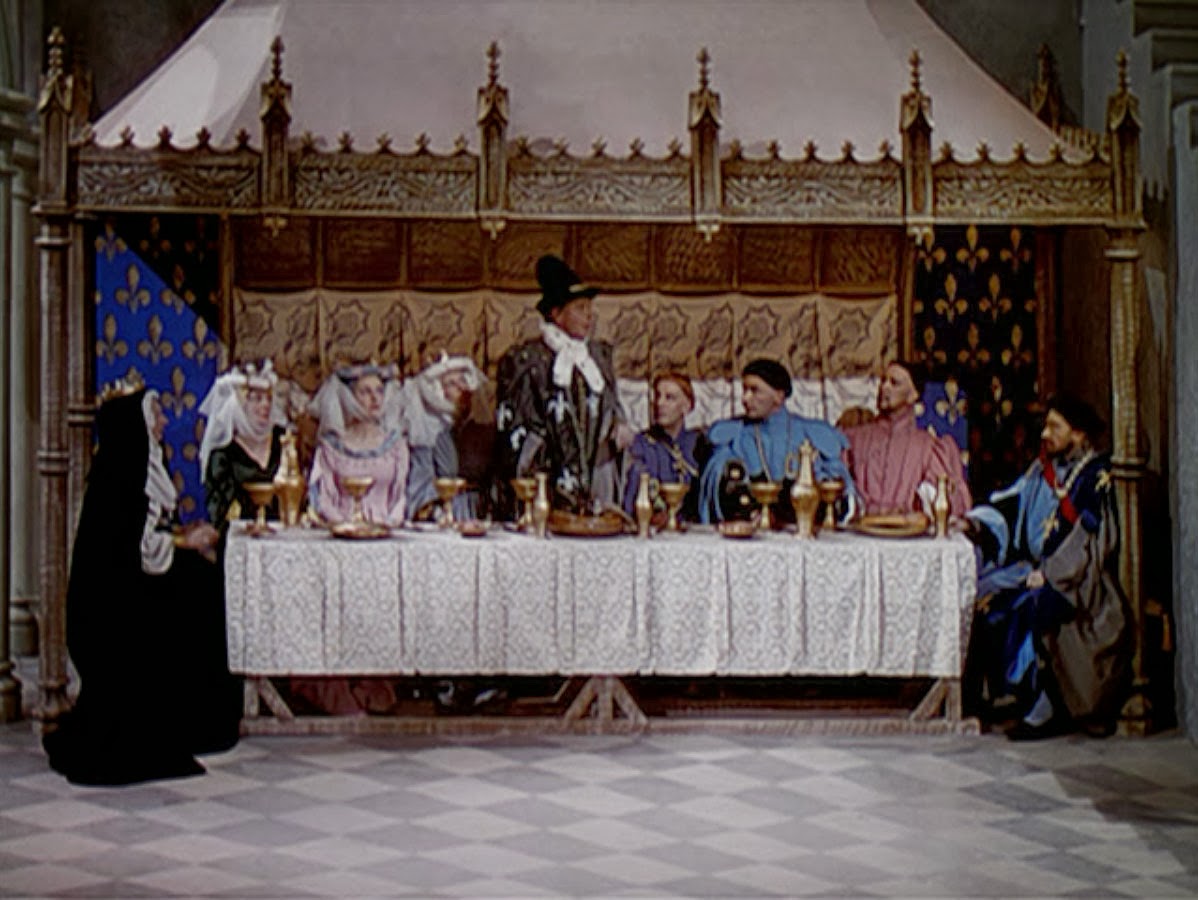Like the cinematographers, the art directors decided to sharply reduce the number of nominees this year -- in their case, to three per category.
The nominees were ...
(Black-and-White)
- Anna and the King of Siam. Art Direction: Lyle Wheeler, William Darling; Interior Decoration: Thomas Little, Frank E. Hughes
- Kitty. Art Direction: Hans Dreier, Walter Tyler; Interior Decoration: Sam Comer, Ray Moyer
- The Razor's Edge. Art Direction: Richard Day, Nathan Juran; Interior Decoration: Thomas Little, Paul S. Fox
(Color)
- Caesar and Cleopatra. John Bryan
- Henry V. Art Direction: Paul Sheriff, Carmen Dillon
- The Yearling. Art Direction: Cedric Gibbons, Paul Groesse; Interior Decoration: Edwin B. Willis
... when they should have been ...
(Black-and-White)
- Anna and the King of Siam. Art Direction: Lyle Wheeler, William Darling; Interior Decoration: Thomas Little, Frank E. Hughes
- The Best Years of Our Lives. Art Direction: Perry Ferguson, George Jenkins; Interior Decoration: Julia Heron
- Children of Paradise. Art Direction: Léon Barsacq, Alexandre Trauner
(Color)
- Duel in the Sun. Art Direction: J. McMillan Johnson, James Basevi; Interior Decoration: Emile Kuri
- Henry V. Art Direction: Paul Sheriff, Carmen Dillon
- The Yearling. Art Direction: Cedric Gibbons, Paul Groesse; Interior Decoration: Edwin B. Willis
And the Oscar went to ...
(Black-and-White)
Anna and the King of Siam. Art Direction: Lyle Wheeler, William Darling; Interior Decoration: Thomas Little, Frank E. Hughes.
The lavish decor for the movie sometimes resembles that of a very expensive Thai restaurant. Director John Cromwell had hoped for color, but the studio wouldn't spring for it. Art director Lyle Wheeler got his chance to do it over in color ten years later when it became The King and I, reusing many of the original designs. He won an Oscar for that version, too.
(Color)
Something of a surprise winner in this category, given that much of the film takes place out of doors and the interiors are the sparsely furnished cabins of impoverished Florida farmers.
... when it should have gone to ...
(Black-and-White)
 |
| Alexandre Traunder |
 |
| Léon Barsacq |
 |
| Baptiste (Jean-Louis Barrault) gives Garance (Arletty) a role in his latest pantomime |
(Color)
 |
| Carmen Dillon |
This fine version of Shakespeare's play was originally planned as a wartime morale booster, and it shows director and star Laurence Olivier at his creative best, well-supported by Leo Genn, Felix Aylmer, Robert Newton, Max Adrian, Robert Helpmann, Ernest Thesiger, and Renee Asherson, among many others. But it's also a tribute to the creative work of Paul Sheriff, the Russian-born designer who was the mainstay of many of the British-made films of the 1940s and '50s, and Carmen Dillon, who won an Oscar for Olivier's Hamlet. She also trained many of the British designers who would follow her in the 1960s and '70s, including Oscar winners John Box, Terence Marsh, and Roy Walker. The design of Henry V is something of a tour de force, as the film begins in a re-creation of the Elizabethan Globe theater, then moves into a stylized presentation, and finally into realistic battle scenes. Some of the sets are modeled on the images from the French gothic illuminated manuscript, the Très Riches Heures du Duc de Berry, which was contemporary with the actual King Henry V.
 |
| From the Très Riches Heures du Duc de Berry |
 |
| Banquet scene in Henry V |
 |
| The Chorus (Leslie Banks) on the stage of the Globe in Henry V |
 |
| A view from the Globe stage in Henry V |
 |
| The stylized gates of Harfleur in Henry V |
 |
| Laurence Olivier as Henry V |





No comments:
Post a Comment